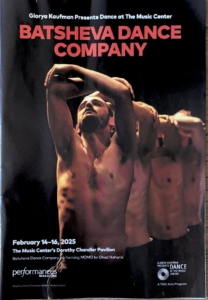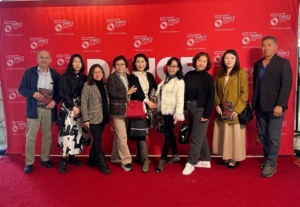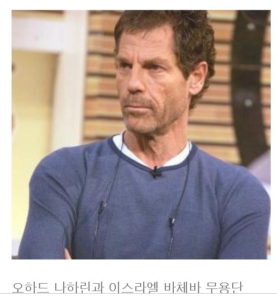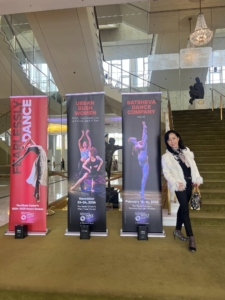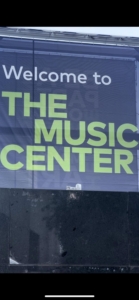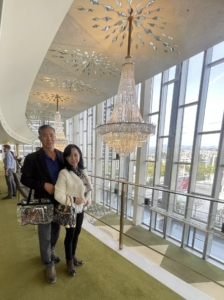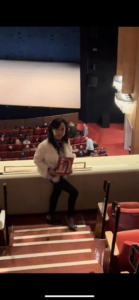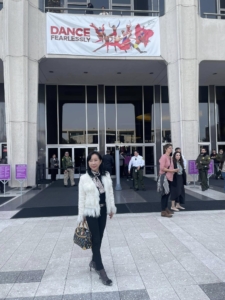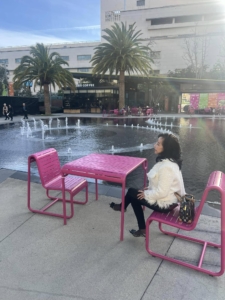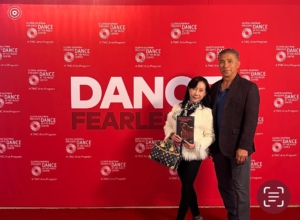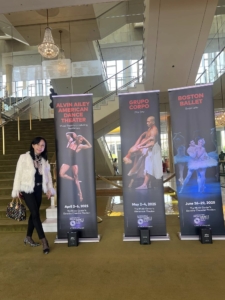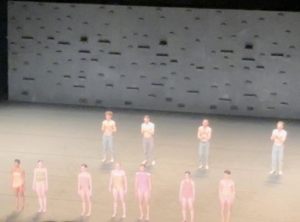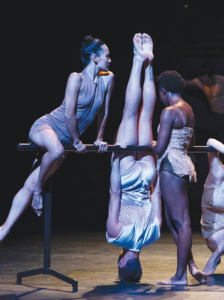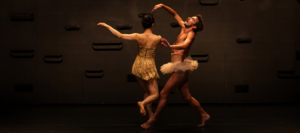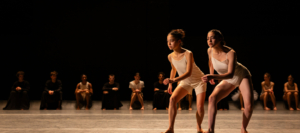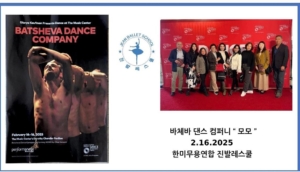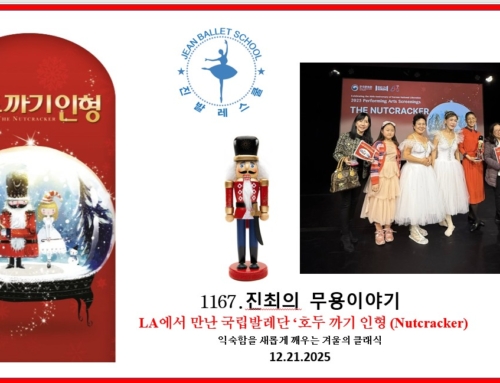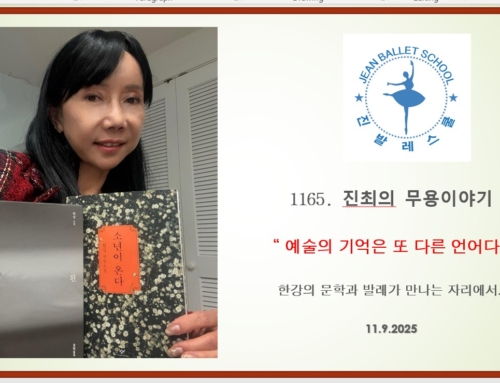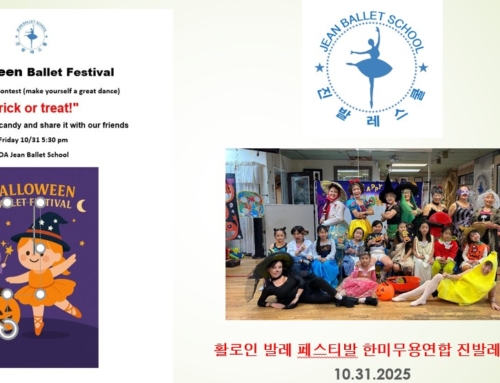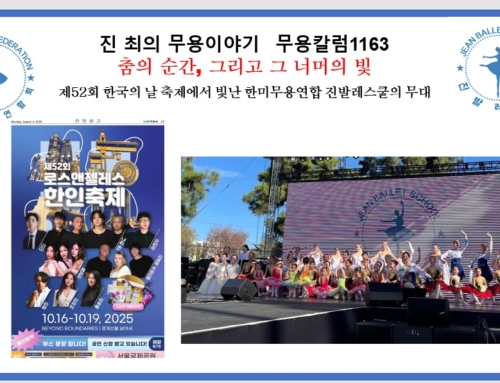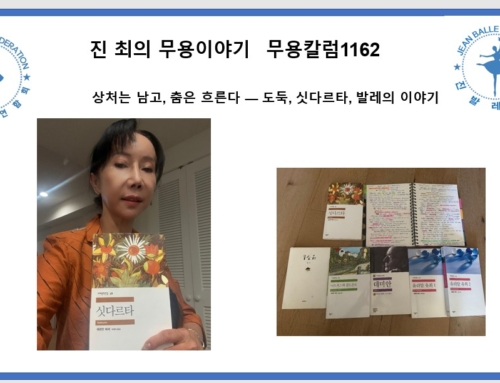Dance as a Mirror of Our Time – Experiencing Batsheva Dance Company’s MOMO
Dance is more than movement. It is language. It is a mirror. And sometimes, it is a scream. Through movement, dance reflects society, politics, and the deepest questions of human existence. MOMO, the latest work by the renowned Batsheva Dance Company, performed last week at The Music Center in Los Angeles, was a profound reminder of that truth.
I attended the performance with members of “BALSAMO,” the community circle of ballet lovers from Jean Ballet School. Batsheva, founded in 1964 by Baroness Batsheva de Rothschild with Martha Graham as artistic adviser, is a pillar of Israeli contemporary dance. It was my first time seeing their work live, and knowing that MOMO was the U.S. premiere of a piece by the legendary Ohad Naharin only heightened our anticipation.
Upon arriving at the venue, the atmosphere felt different—heightened security, protestors with placards, and a tension that extended beyond the stage. The performance, we realized, was not just art—it was a political moment. Even the pre-show announcement sternly forbidding video and photography emphasized that this was not an ordinary night at the theater.
MOMO presents a duality of souls: one primal and masculine in force, the other searching, evolving, discovering identity. It’s not just aesthetic—it’s philosophical. It reflects the contradiction and duality of modern life, where power and individuality struggle for harmony.
Historically, dance has always echoed its time. After the French Revolution, ballet transformed from aristocratic entertainment to a people’s art. In the U.S., modern dance became a tool for Black identity and cultural expression. Today, dance continues to raise questions, provoke reflection, and voice collective concerns.
Some audience members found MOMO slow or difficult. One person said it was shocking. Another admitted to nodding off. But that is the nature of contemporary dance—it does not give answers. It opens space. Each person brings their own experiences and emotions to interpret what unfolds. The more we engage, the more we discover—about the work, and about ourselves.
Dance is a mirror of the time. But it is also a window—one that lets us peer into the future, and into ourselves. The silence between movements, the stark stage, the open-ended gestures—these all carry meaning, if we are willing to listen not just with our eyes, but with our hearts.
By Jean Choi
President, KOA Dance Federation
Director, Jean Ballet School
Columnist, Jin Choi’s Dance Story
www.koadance.org | www.balletjean.com
3727 West 6th Street, Suite #607, Los Angeles, CA 90020
Tel: (323) 428-4429
“춤, 시대를 비추는 거울 – “ 바체바 댄스컴퍼니 ‘모모’를 보고” Batsheva Dance Company “ MOMO ”
춤이 시대의 사회성과 정치를 반영하는 방식은 다양하다. 춤은 단순한 신체적 움직임을 넘어, 사회적 메시지를 전달하고 시대적 흐름을 반영하는 강력한 예술적 표현 수단이 된다. 이는 바체바 댄스컴퍼니의 ‘모모’에서도 분명히 드러났다.
지난주 뮤직센터에서 공연한 바체바 댄스컴퍼니 “ 모모 ”를 진발레스쿨 발사모 ( 발레를 사랑하는 사람들의 모임) 단원들과 함께 관람했다. 바체바 댄스 컴퍼니는 1964년 바체바 드 로스 차일드 (Batsheva de Rothschild)가 마샤그라함을 예술고문으로 해서 창립된 이스라엘 무용단인데 한 번도 관람한 적이 없고 생소하여 무척 궁금했다. 마침 공연이 뮤직센터에서 된다는 소식을 듣고 반가웠다. 특히 이번 작품은 천재적 안무가로 추앙받는 오하드 나하린(Ohad Naharin)의 “ 모모 ” 는 미국 초연이라 해서 더욱 관심이 갔다. 한미무용연합회는 (KOA Dance Federation)은 뮤직센터에 등록된 비영리단체로 무용공연 관람 시 20% DC를 받는 혜택이 있다. 단원들은 단체티켙을 샀고 미리 바체바 댄스컴퍼니에 대한 사전 공부를 “진최의 무용이야기” 강좌를 통해 배웠다.
공연장 입구는 다른 공연때와는 달리 무장한 군인도 보였고 보안 경비가 삼엄했다. 입구 양쪽에서 서로 다른 입장을 표시하며 피켓을 들고 데모하는 군중도 보였다. 공연내용이 주목하는 현재 정치와 맞물려 그런 거 같다는 생각을 혼자 했다. 공연 도중에도 사진과 비디오를 찍지 말라는 아나운서룰 할 정도였다. 바체바 댄스 컴퍼니 웹사이트를 찾아보니 엄청 큰 단체인 것을 알고 나서 나 또한 놀래며 흥미를 갖게 되었다. 이는 단순한 공연이 아니라, 정치적 맥락 속에서 춤이 어떻게 해석될 수 있는지를 보여주는 장면이었다. 모모’ 역시 인간의 본질적인 감정과 힘의 균형을 탐구하면서도, 현대 사회의 갈등과 정체성을 암시하는 듯했다.
춤은 역사적으로도 사회 변화를 반영해 왔다. 19세기 프랑스혁명 이후 고전 발레가 민중을 위한 예술로 변화한 것이나, 미국에서 흑인 사회의 정체성을 표현하기 위해 현대무용이 발전한 사례가 대표적이다. 오늘날에도 춤은 단순한 엔터테인먼트를 넘어, 사회적 문제를 제기하고 공감을 유도하는 역할을 한다.
바체바 댄스컴퍼니의 ‘모모’는 두 개의 영혼이 공존하는 작품으로 묘사된다. 하나는 원시적이고 남성적인 힘을 상징하고, 다른 하나는 개인의 정체성을 찾아가는 과정이다. 이는 단순한 미학적 표현이 아니라, 우리가 살아가는 세계의 이중성을 반영하는 작품으로 볼 수 있다. 특히, 현대 사회에서의 권력과 개별성의 균형을 조명하는 점에서 더욱 의미가 깊다. 이처럼 춤은 시대의 거울이며, 때로는 미래를 비추는 창이 되기도 한다. 정치적 갈등과 사회적 변화를 담아낸 춤은 단순한 공연 이상의 의미를 가지며, 관객들에게 깊은 메시지를 전달한다. 춤을 통해 우리는 그 시대의 고민과 희망을 읽을 수 있다.
현대무용이 우리에게 주는 메세제는 다양하다. 전날 공연을 본 딸레미는 공연을 보고 충격과 쇼크를 받았다고 하기도 하고, 무엇을 표현하는지 모르는 느릿한 동작, 성의 없어 보이는 의상, 텅 빈 무대 공연 내내 지루해서 졸기만 하는 사람도 있었다. 무엇보다 중요한 것은 개인적인 해석을 존중하는 태도이다. 현대무용은 정해진 정답이 없는 예술이다. 관객 각자가 자신의 경험과 감정에 따라 다르게 받아들일 수 있으며, 이는 무용을 더욱 풍성하게 만든다. 처음에는 난해하게 느껴질 수 있지만, 공연을 반복적으로 감상하고, 무용수와 안무가의 의도를 탐구해 보며 천천히 다가가다 보면 어느 순간 새로운 감각과 깊이 있는 감상을 경험할 수 있을 것이다. 이 과정에서 우리는 기존의 틀을 벗어나고, 자신을 새롭게 발견하는 기회를 얻는다.
“Dance, a mirror that illuminates the times – “Seeing the Batsheva Dance Company ‘Momo’ ” MOMO ”
There are various ways in which dance reflects the sociality and politics of the times. Dance goes beyond simple physical movements and becomes a powerful artistic expression means that conveys social messages and reflects the trend of the times. This was also evident in Bacheva Dance Company’s ‘Momo’.
I watched the Bacheva Dance Company “Momo,” which was performed at the Music Center last week, with members of the Jean Ballet School Balsamo (a group of ballet lovers). The Bacheva Dance Company was founded in 1964 by Bacheva de Rothschild as an artistic adviser, and I had never seen it before and was very curious because it was unfamiliar. It was nice to hear that the performance would be held at the Music Center. In particular, this work was even more interesting because it was the American premiere of Ohad Naharin’s “Momo,” who is revered as a genius choreographer. The Korea-U.S. Dance Federation is a non-profit organization registered at the Music Center and has the benefit of receiving 20% DC when watching a dance performance. Members bought group teacups and learned the preliminary study of the Bacheva Dance Company through the “Jin’s Best Dance Story” course in advance.
Unlike other performances, the entrance to the concert hall was also seen armed soldiers, and security was tight. There were also crowds showing different positions on both sides of the entrance and holding pickets and demonstrating. I thought to myself that it was because of the current politics that the performance content was paying attention to. Even during the performance, I was even told not to take photos and videos. When I looked up the Bacheva Dance Company website, I was also surprised and interested after finding out that it was a huge group. It was not just a performance, but a scene that showed how dance can be interpreted in a political context. Momo’ also seemed to imply conflict and identity in modern society while exploring the balance of essential human emotions and power.
Dance has historically reflected social change. A typical example is the transformation of classical ballet into art for the people after the French Revolution in the 19th century, and the development of modern dance in the United States to express the identity of the black community. Even today, dance goes beyond simple entertainment and plays a role in raising social issues and inducing empathy.
Bacheva Dance Company’s ‘Momo’ is described as a work where two souls coexist. One symbolizes primitive and masculine power, and the other is the process of finding an individual’s identity. This is not just an aesthetic expression, but a work that reflects the duality of the world in which we live. In particular, it is more meaningful in that it illuminates the balance of power and individuality in the modern society. In this way, dance is a mirror of the times and sometimes a window into the future. Dance that captures political conflict and social change has a meaning beyond simple performance and conveys a deep message to the audience. Through dance, we can read the concerns and hopes of that era.
The messes that modern dance gives us are diverse. Daughter Remi, who watched the performance the day before, said she was shocked and shocked to see the performance, and there were slow movements that did not know what she was expressing, costumes that looked insincere, and some people just dozed off because they were bored throughout the empty stage performance. Most important of all, it is an attitude that respects personal interpretation. Modern dance is an art with no fixed answer. Each audience can accept it differently depending on their own experiences and emotions, which makes the dance richer. At first, it may feel difficult, but if you repeatedly appreciate the performance and approach it slowly while exploring the intentions of dancers and choreographers, you will at some point experience new senses and deep appreciation. In this process, we get an opportunity to break away from the existing framework and discover ourselves anew.
www.koadance.org www.balletjean.com
한미무용연합회. 진발레스쿨
3727 West. 6th Street #607. LA CA 90020
Tel: 323-428-4429

